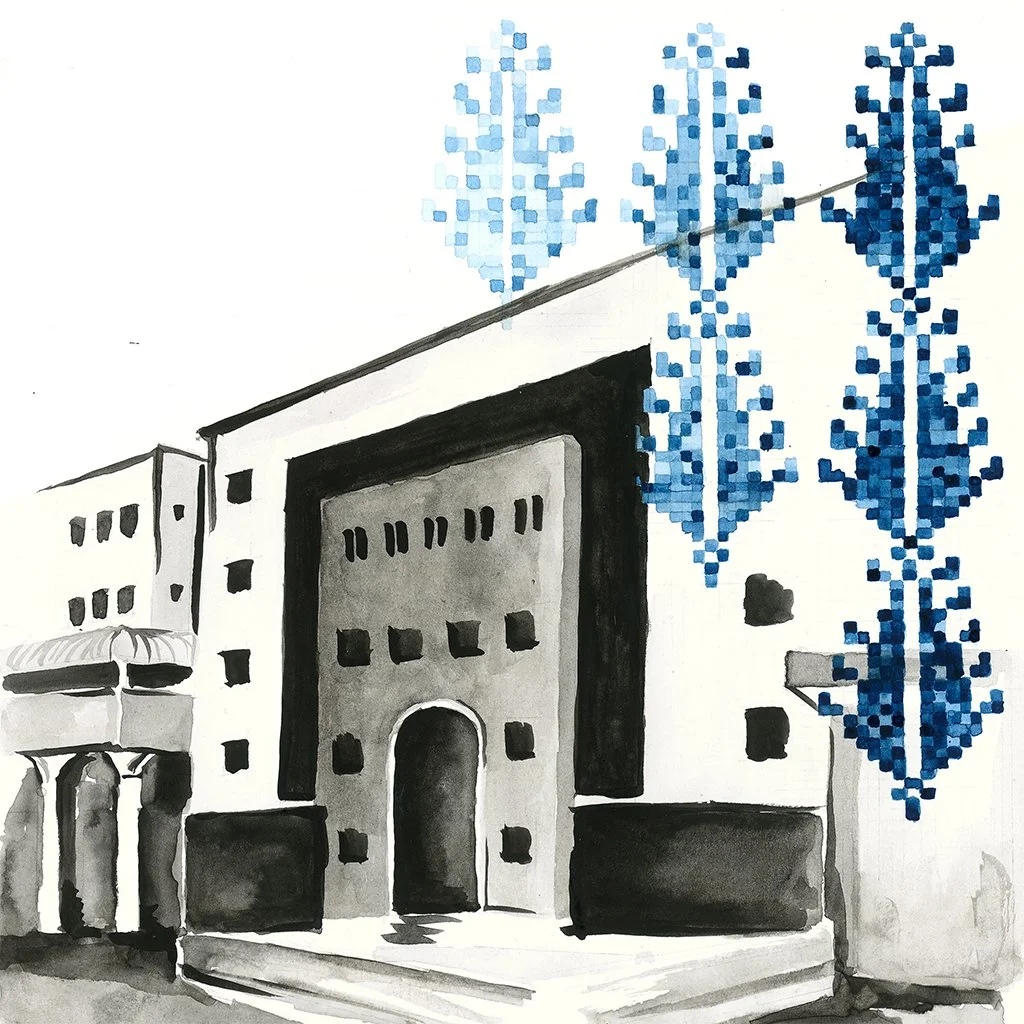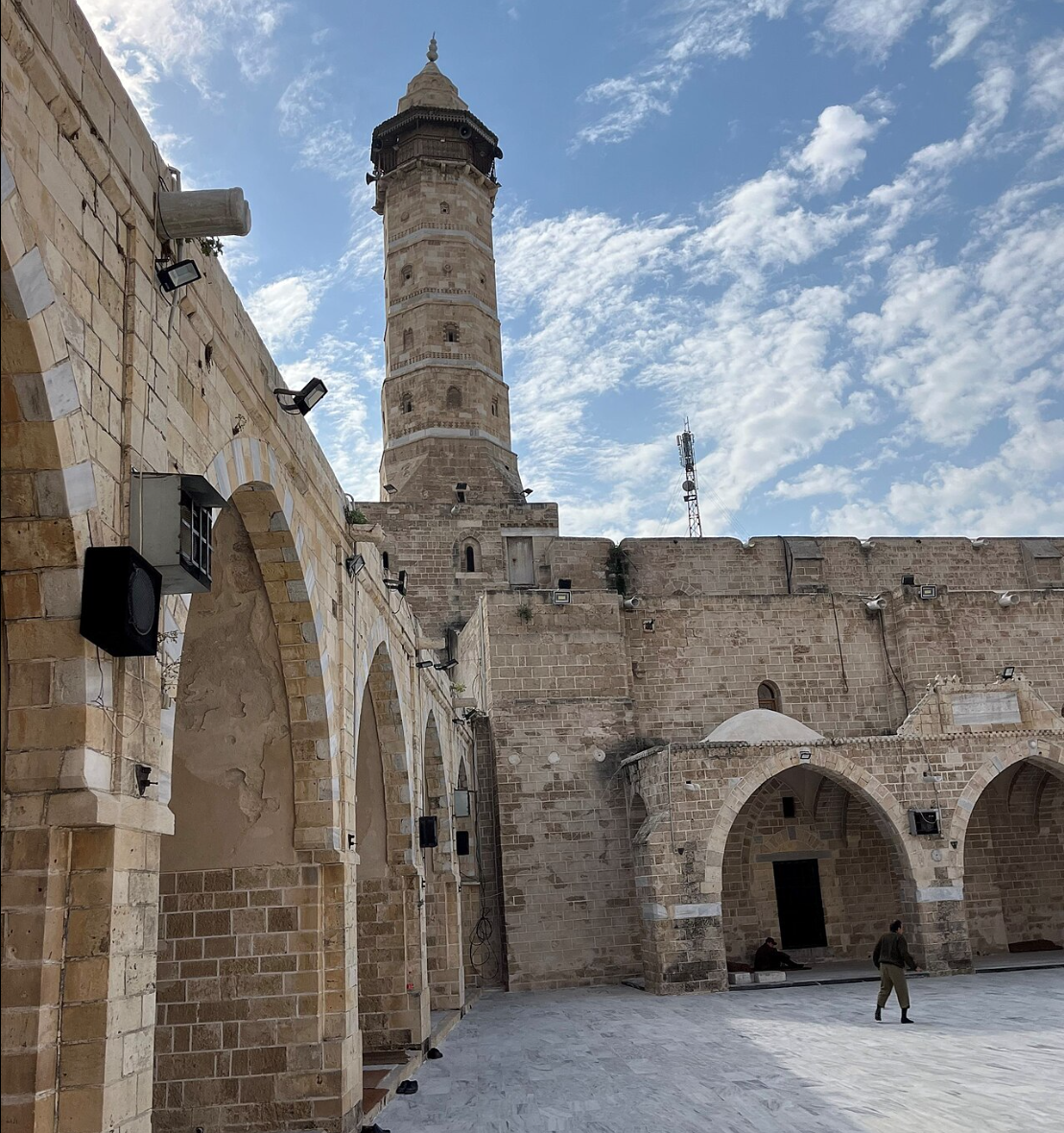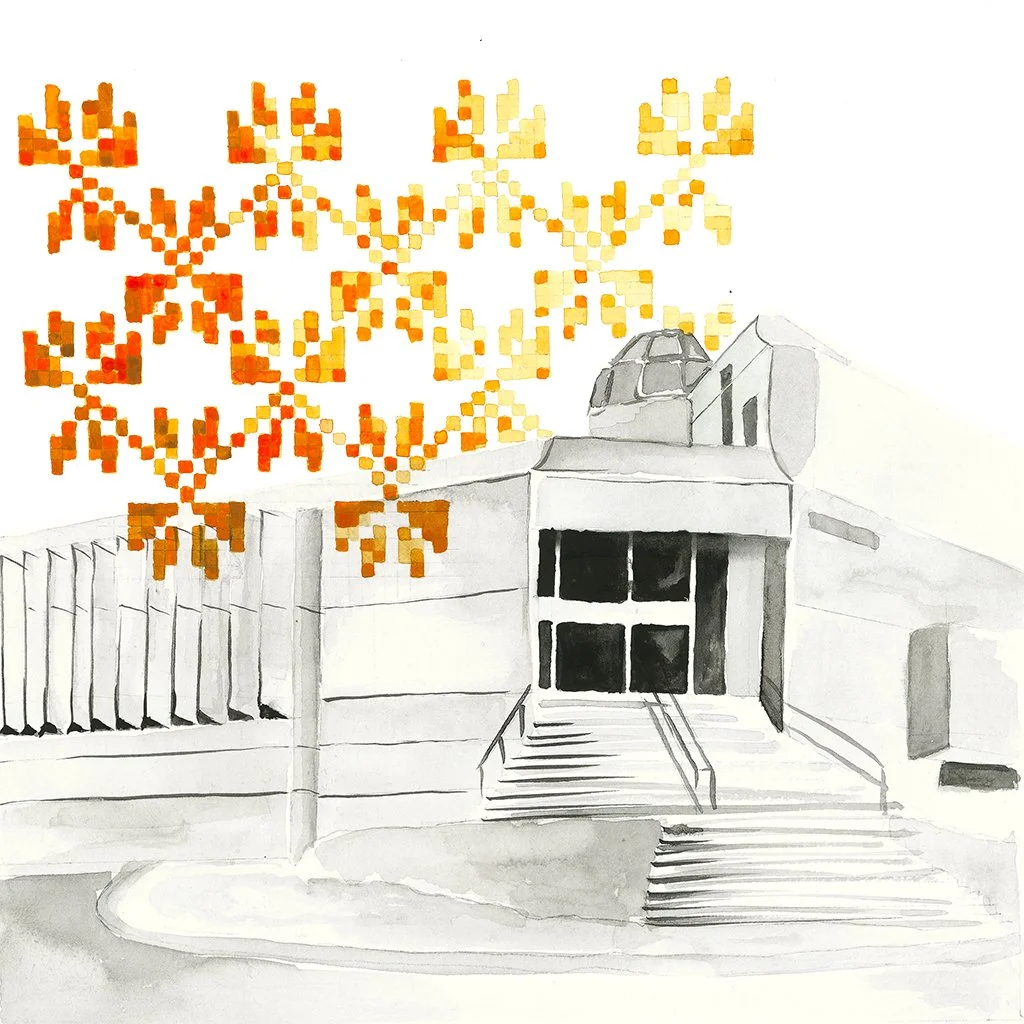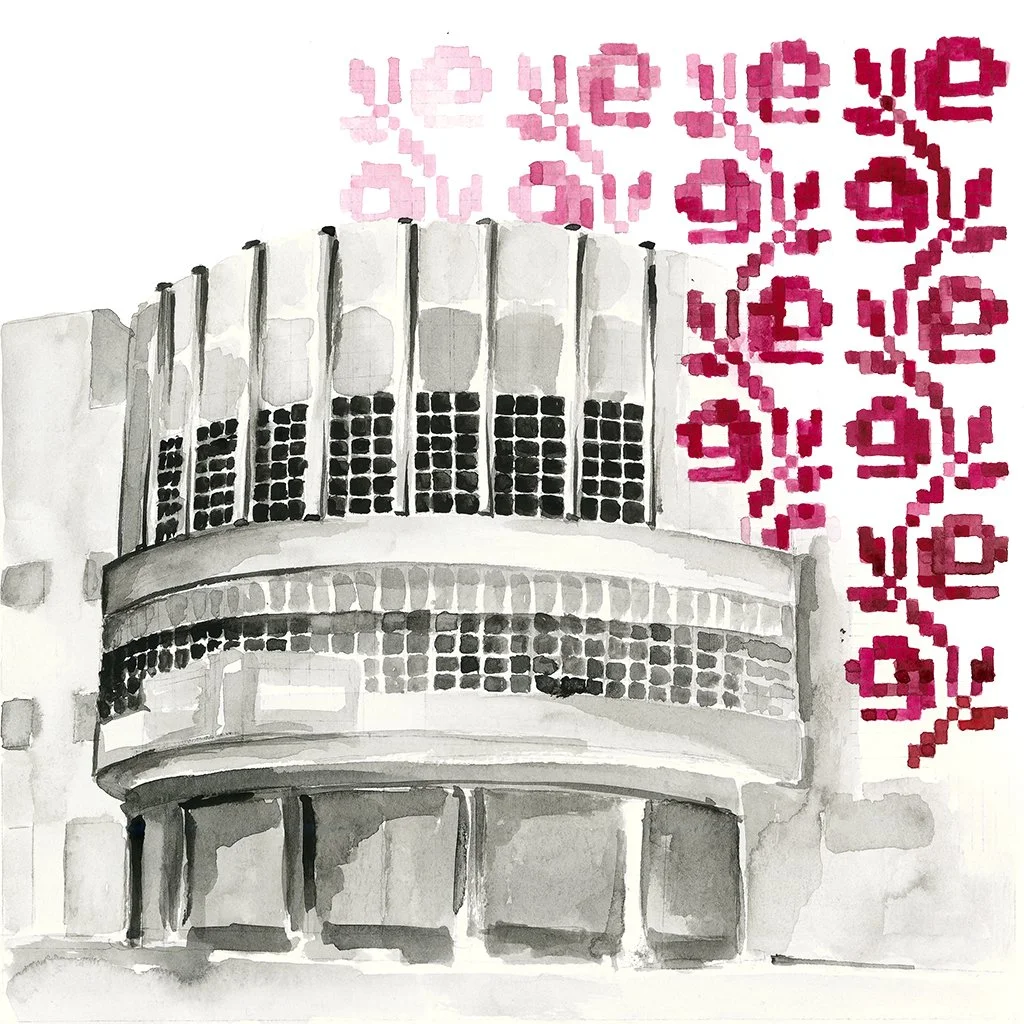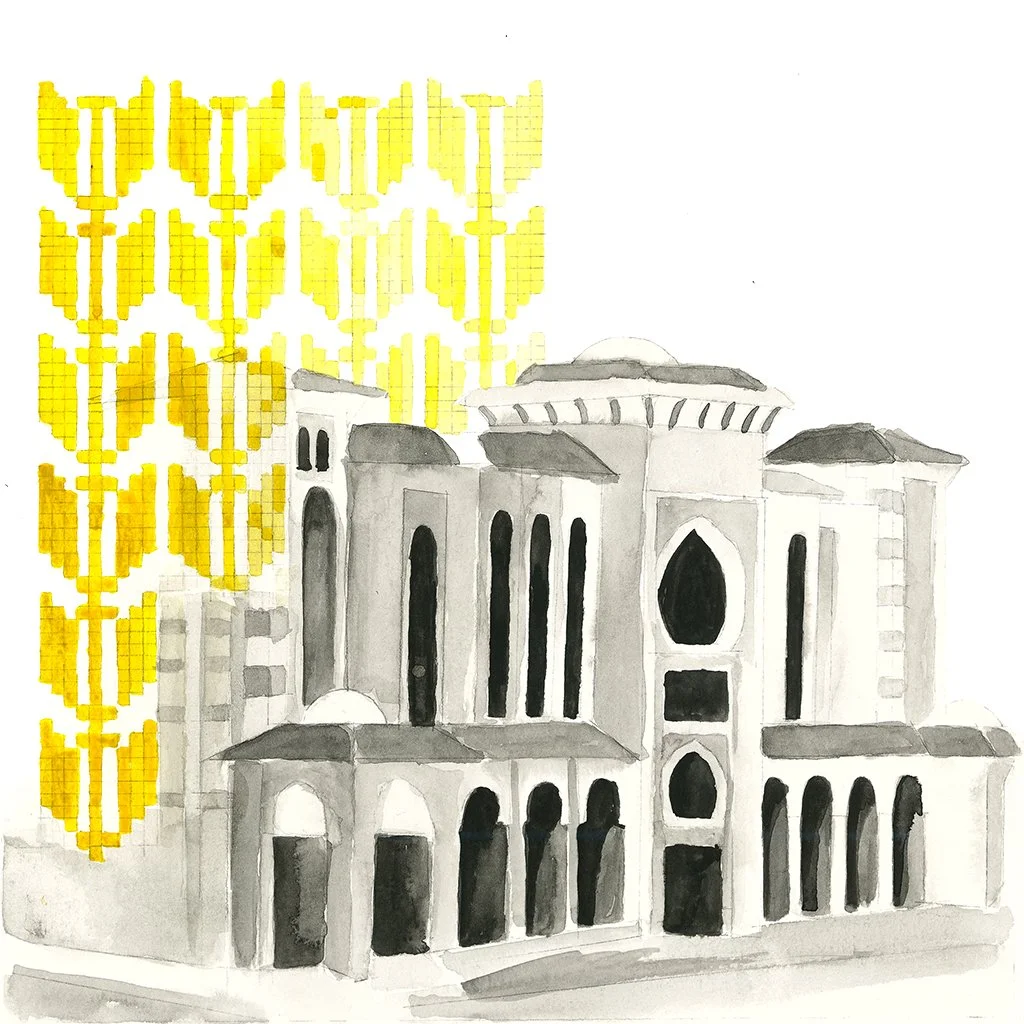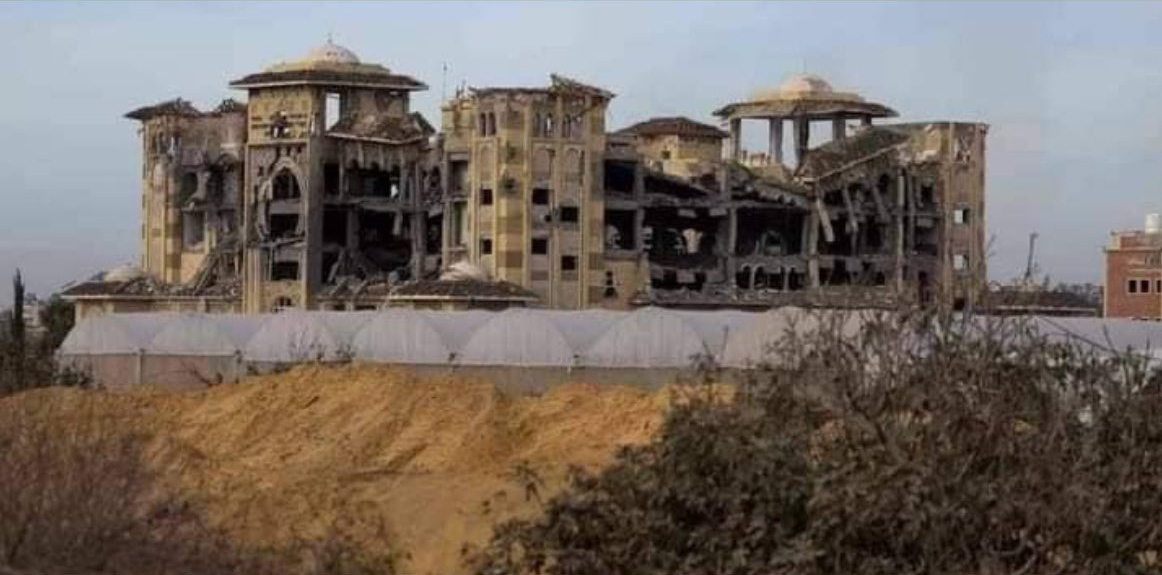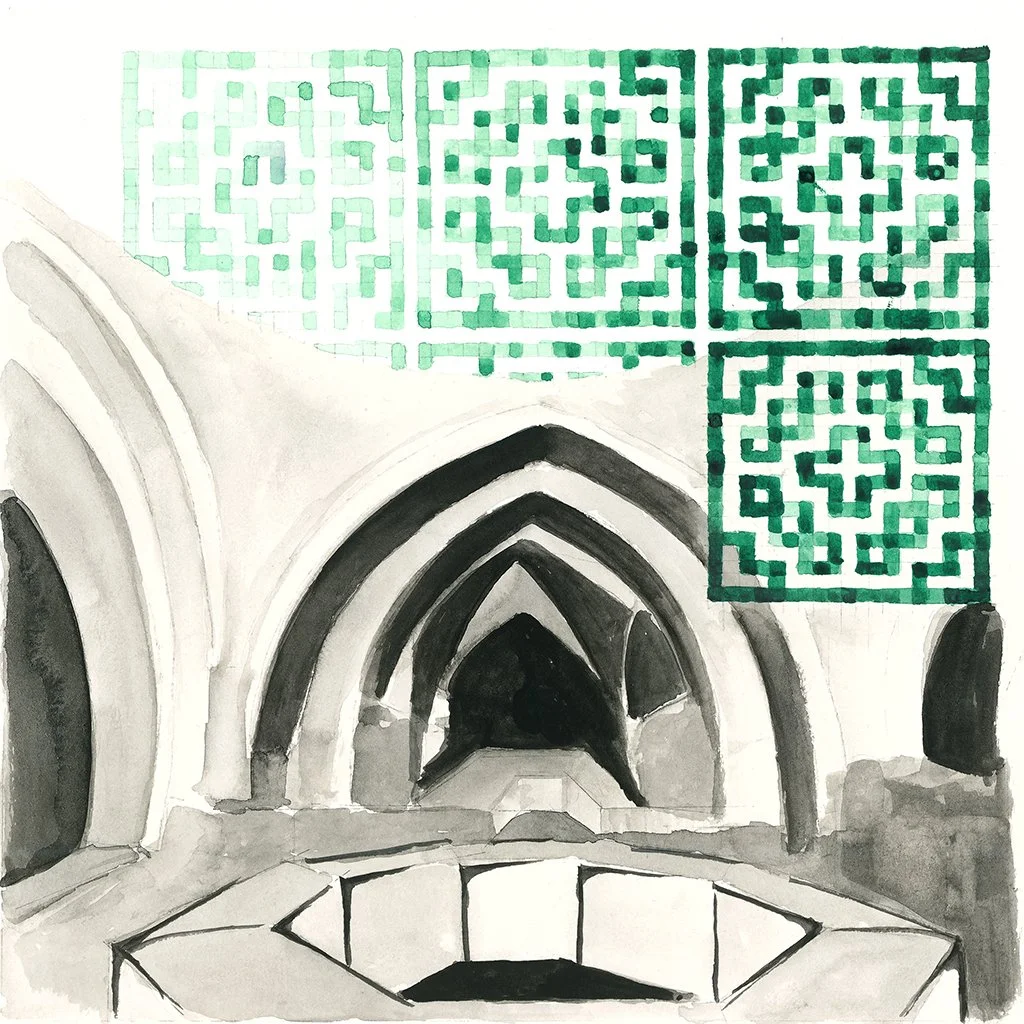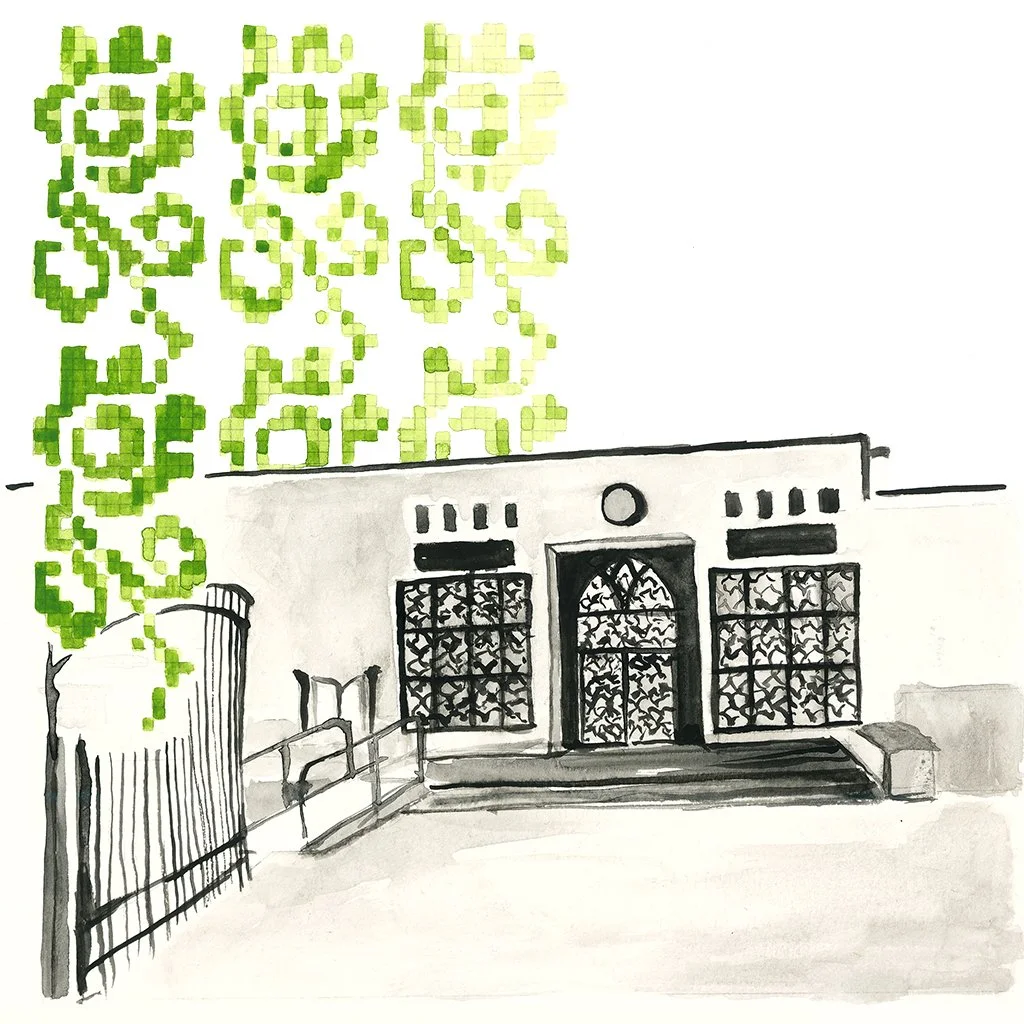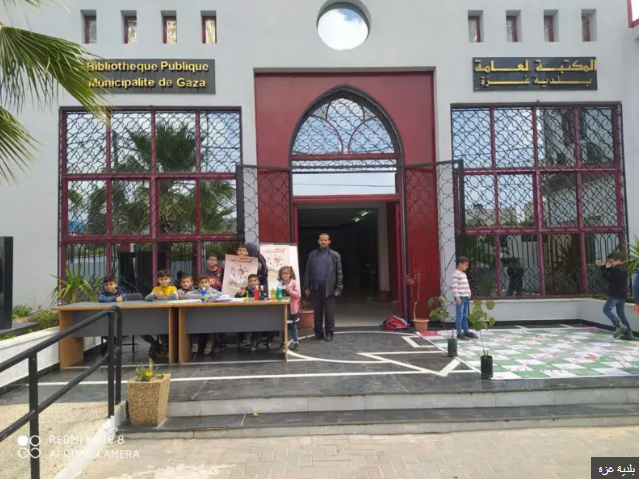Al-Shifa Hospital
Al-Shifa Hospital Complex is one of the largest health institutions in the Gaza Strip. It is located in northwestern Gaza, 500 meters from the Mediterranean Sea, between Shati' refugee camp and Al-Rimal neighborhood in central Gaza, and covers an area of 45,000 square meters.
The hospital was opened as a medical facility in 1946 during the British Mandate on what previously was a military outpost of the British Army. As Egypt assumed control of Gaza City, following the 1948 Nakba, the hospital became centralized in the coastal enclave with expanded departments and more beds. With the occupation of the Gaza Strip in 1967, the hospital came under Israeli military rule.
The hospital employs about 1,500 employees, including 500 doctors and 760 nurses, equivalent to a quarter of the hospital workers in the Gaza Strip, and it has 700 patient beds, according to statistics from Doctors Without Borders. The complex includes a number of specialized hospitals, including a surgery hospital, an internal medicine hospital, an obstetrics and genecology hospital with a premature baby nursery department, and an emergency department with an intensive care unit, radiology, blood bank and planning, and specialized outpatient clinics.
The hospital was significantly expanded in 1980 by an Israeli company, under the supervision of the occupation army. The executing company was the same company that designed a similar Israeli hospital in the city of Hadera south of Haifa. The hospital was later transferred to the Palestinian Authority following the signing of the Oslo Accords in 1994, and it was expanded through the construction of new buildings and expansion of rooms. In 2006, the hospital became managed by the Palestinian Ministry of Health in Gaza after the Palestinian division.
A World Health Organization (WHO) mission reported in April 2024 that the hospital is no longer operational, with most buildings destroyed and equipment rendered unusable.
The Great Omari Mosque
The Great Omari Mosque is considered one of the oldest mosques in the Gaza Strip. It is located in the Old City of Gaza (Al-Daraj neighborhood), southeast of Palestine Square, near the Qaysariyya Market (“Gold Market”) and the historic Al-Zawiya Market. The mosque dates back to the 12th century AD and covers an area of about 4,100 square meters, with a courtyard of 1,190 square meters. It is distinguished by its minaret, which was built later during the Mamluk period: square-shaped in its lower half and octagonal in the upper half. The mosque consists of 38 marble columns surrounded by circular arches, topped with elevated domes, and has five gates. It was named after Caliph Omar ibn al-Khattab. It is believed that during the Roman era, the site was a temple dedicated to the god Marna and later became the Byzantine Church of Eudoxia.
In the 7th century, Muslims converted it into a mosque. In 1149, the Crusaders transformed it into a cathedral dedicated to John the Baptist, most of which was destroyed in 1187 during the Ayyubid period. The Mamluks rebuilt the mosque in the 13th century, but it was destroyed by the Mongols in 1260. In the 16th century, the Ottomans rebuilt it again, 300 years after an earthquake had damaged it. The Supreme Muslim Council carried out a full reconstruction in 1926 after large sections of the mosque were destroyed and its minaret collapsed during World War I due to British aerial bombardment. Parts of the mosque were destroyed by Israel in 2014, and it was restored again in 2016 with Qatari funding.
Rashad al-Shawa Cultural Center
Rare example of Brutalist architecture in the Palestinian territories. It was designed by Syrian architect Sa'ad Mohaffel and is located between Gaza's old city and the beach. The Rashad Al-Shawa Cultural Center was the first of its kind built in Palestine, named after Rashad Al-Shawa, who served as the mayor of Gaza from 1972 to 1975. He envisioned building this center to serve as a Palestinian cultural front. The idea for establishing the center and designing its architectural and engineering plans began in 1978, and the center was completed in 1985, with the printing press starting to operate in 1986. The center officially opened to host events and activities in 1990, reaching the peak of its activity with the arrival of the Palestinian Authority to the Gaza Strip in 1994, reviving national events.
The center had a distinctive design, consisting of two floors with a triangular ceiling. It was nominated for the Aga Khan Award for Architecture in 1992. Before its destruction, those in charge of the center took care to maintain and periodically renovate it to preserve its unique architectural form.
The building hosted significant events in the history of the Palestinian cause, including sessions of the National and Legislative Councils, and visits from heads of state, including former U.S. President Bill Clinton in 1998 during the era of the late President Yasser Arafat, along with many other global and international figures.
Building of al-Nasr Cinema
An-Nasr Cinema was built in 1956. Historian Abaher el-Sakka was able to locate plans and drawings in the Gaza City archives. He notes that An-Naṣr was part of a wave of cinemas that opened during the 1950s, after the end of the British Mandate and under Egyptian rule, during what was the golden age of cinema in Gaza and Palestine. An-Nasr Cinema is built on a large plot of land overlooking 'Umar al-Mukhtar Street, at the intersection of a wide secondary road. The size of the plot (over 50 dunums, or more than 50,000 m²) allowed for the construction of a large building while maintaining a certain distance from both streets. The cinema's most remarkable feature is its immense semicircular balcony overlooking the vast entrance. It is supported by four cylindrical columns (the plan called for six). The entrance hall, or foyer, is 13 meters high and decorated with armchairs. This is where the corridors leading to the exceptional services the cinema offered when it was first established (shops, offices, restrooms, and a buffet on each floor) begin. A double staircase rises to the balcony on the first floor of the thousand-seat auditorium, which has ten private boxes for regular and prominent spectators. The plans were drawn up by Cairo architect Said Zaghlul Ibrahim. They are characteristic of the architecture of the 1950s and 1960s in major cities around the world, with large openings and the use of Securit glass for the foyer doors, a feature that only became widespread in Palestine in the 1970s. The cinema is also characterized by its gabled roof, with the roof windows allowing both light and ventilation.
It is on UNESCO's list of cultural assets damaged in the Gaza War.
Sources:
Gaza Places, Gaza Histoire
Al-Azhar University
Al Azhar University-Gaza (AUG) is a Palestinian, public, non-profit and independent higher education institution. Established in 1991 by a presidential decree issued and signed by the late Palestinian President Yasser Arafat, AUG is committed to provide successive generations with solid education, contribute fundamentally to achieve the Palestinian dream in creating a Palestinian national university able to fulfill the ambitions and dreams of the Palestinian upcoming generations, and help them pursue their higher studies under the supervision of highly qualified Palestinian cadres. AUG had modest beginnings with only two faculties; the Faculty of Law, and the Faculty of Education. However, AUG has made great strides in becoming one of the leading universities in Palestine. It has currently twelve faculties that offer a spectrum of undergraduate and graduate programs, central library, two campuses, and centers established to serve the Palestinian community.
Thousands of Palestinian students have joined AUG, pursuing studies in different academic fields, and acquiring the Palestinian values to help them take part in the construction of their own state. AUG has currently around 16000 undergraduate students in twelve faculties
AUG seeks to achieve excellence in higher education and scientific research at both regional and international levels, supported by the mission to positively contribute to the advancement of Palestine by preparing distinctive students and graduating who are capable of taking charge and leading the future of Palestine in order to achieve the Palestinian dream of liberty, independence and state building.
Hammam al-Samra
The building was believed to be the only active hammam, also known as a public bathhouse, remaining in Gaza. It is located in the Zaytoun neighbourhood of the besieged enclave.
The hammam boasted Ottoman architecture and had several rooms, each with a different temperature. It was managed by Haj Salim Abdullah al-Wazeer and the building is over 1,000 years old.
A wall at the entrance of the building dates back to the Mamlouk era.
Gaza City’s Municipal Public Library
The Gaza Municipality Public Library was established in 1997 and officially inaugurated in 1999 in cooperation with the Urban Association of Dunkirk Municipality in France, the World Bank, and the Union of French Cities. Around eight municipal employees were sent to Dunkirk, France, where they received practical training on the computerized M2L Integrated Library Management System and on book classification using the internationally recognized Dewey Decimal System. This team was then qualified to return and manage the library according to the most advanced international standards. The library is also equipped with electronic security systems to protect its collections.
The mission of the Gaza Municipality Public Library is to promote a culture of reading, research, and creativity through the use of modern technology, making it a center of excellence for knowledge production and cultural exchange. Its main objectives are to raise public cultural awareness, encourage constructive use of leisure time, revive and promote popular culture, support social and economic development through free scientific research, and nurture literary, scientific, and artistic talents by providing access to resources and opportunities for creative expression and learning.
In November 2023, it was destroyed in airstrikes carried out by Israeli Occupation Forces.
Sources:
Washington Post, mogaza, Facebook
Historic Municipality building of Gaza
The historic Gaza Municipality Building, located on Omar Al-Mukhtar Street in Gaza City, is a remarkable example of early 20th-century architecture, known for its beautiful decorations and distinctive geometric designs. It was constructed between 1928 and 1934 during the presidency of Mr. Fahmi Al-Husseini and served as the main headquarters of the Gaza Municipality until the late 1960s, when operations moved to the current municipal building in Palestine Square.
Tragically, on January 20, 2024, Israeli Occupation warplanes bombed the historic building, destroying its foundations and leaving it on the brink of collapse. Once a symbol of Gaza’s civic heritage and architectural beauty, the site now stands as a testament to the city’s enduring struggle to preserve its history amid devastation.
Video showing the destruction that struck the historic municipality building.
To all Schools in Gaza…
This snapshot from the UNRWA outlines the results of assessing the probability of damage to school buildings by analyzing their proximity to damaged sites identified by the United Nations Satellite Centre (UNOSAT) using data collected on 08 July 2025.
MAIN FINDINGS
▪ This exercise indicates that 97% (a +1.6% increase from the previous reporting period) of schools sustained some level of damage to their buildings, this includes “Direct hit”, ”Damaged” and “Likely damaged”.
▪ Nearly 91.8% of school buildings in Gaza (518 out of 564) will either need full reconstruction or major rehabilitation work to be functional again.
▪ The assessment found that 432 school buildings (76.6% of the total school buildings in Gaza) have been “Direct hit” since 7 October 2023, an increase of 26 school buildings (+4.6%) since the previous reporting period.
Qasr al-Basha Museum
It was located in the Daraj quarter, is a large palace with two floors and dates to the Mamluk era. Its decorations include the rank, or heraldic emblem, of Sultan al-Zahir Baybars. It was the residence of the governors of Gaza in the Mamluk and Ottoman periods. The palace was named after the Ridwan family who owned it at the beginning of the Ottoman era. Napoleon Bonaparte stayed for three nights at that Palace during his campaign against Syria in 1799, and the Ministry of Tourism and Antiquities had restored the palace and refurbished it as a museum.
Hajj Abdul-Raouf Al-Ghazali (71 years old) is one of thousands of Palestinians who deeply understand what this landmark meant. He recalls: “As a child, I used to play in the alleys of the neighborhood, and Qasr al-Basha stood tall before me like a mountain. Years passed and conditions changed, but the palace remained in its place.”
He added, in an interview with Al-Akhbar newspaper, “It wasn’t just an old building, but a living museum where we lived our history. Its walls told the stories of our ancestors, and every corner whispered secrets of the Mamluk and Ottoman eras.”
Khader Tarazi House
It is located on Omar Al-Mukhtar Street near Al-Nasr Cinema in Gaza City, is a distinguished example of early to mid-20th-century Palestinian residential architecture. Built in a modern Arab style that blends local traditions with Ottoman and British Mandate influences, the home features a central courtyard, arched windows and doorways, decorative stonework, and symmetrical facades. A marble plaque above the entrance reads, “Whatever blessings you have are from God.” The late Khader Tarazi purchased the house and its adjoining orchard from the late Saeed Al-Husseini. Mr. Tarazi was a member of one of Gaza’s prominent Christian families, and served not only as a private home but also as a social and cultural hub during the Mandate era—hosting gatherings, community discussions, and family events that reflected the family’s standing and influence in Gaza’s Christian community.
The Israeli occupation army bombed the Tarazi House during the 2023–2024 genocide, causing extensive damage to large parts of the building.
Church of Saint Porphyrius
The Church of Saint Porphyrius in the city of Gaza is one of the oldest Greek Orthodox churches, built in the Byzantine architectural style. Its construction began at the start of the fifth century AD, led by Saint Porphyrius, who worked to spread Christianity under the orders of the Byzantine Empire.
The architects chose to design it in the shape of a ship, as ships at that time symbolized a lifeline from the dangers of the land and those upon it. The Church of Saint Porphyrius stood in the Al-Zaytoun neighbourhood, east of Gaza City, as a reliable witness to the coexistence that took place between followers of Christianity and Islam throughout the ages. The engravings that adorned its interior walls, along with the hymns, told the story of Saint Porphyrius, who fought against non-divine beliefs in Gaza and worked to spread Christianity until he died there.
St Porphyrius, believed to be the world’s third oldest church, was hit by an Isreali Occupation bombardment on 20 October 2023.

